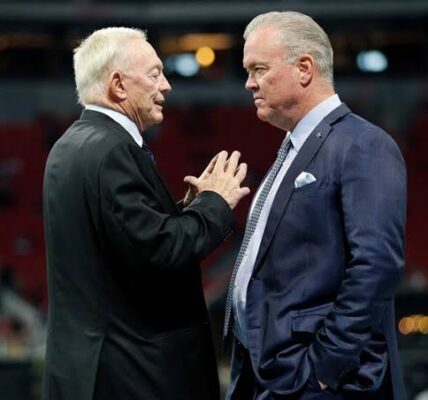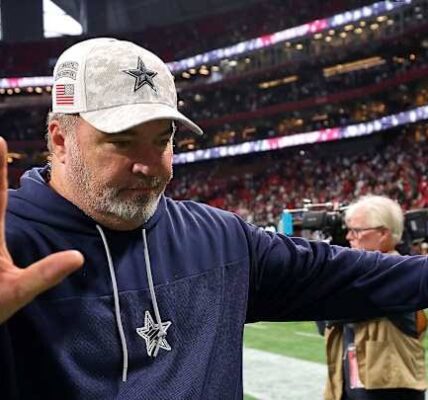Dak is passing to a variety of playmakers, leading to positive outcomes for the Cowboys.
Every week’s offensive game plan resembles a complex puzzle. Cowboys head coach Mike McCarthy has found success when Dak Prescott and the offense distribute the ball to at least 10 different receivers during a game.
has found success when Dak Prescott and the offense distribute the ball to at least 10 different receivers during a game.
“I think the key is it helps maintain rhythm on your call sheet,” McCarthy explained. “It allows you to implement your plan effectively.”
So far, this strategy has paid off in games where Dallas has met this criterion. Prescott connected with 10 or more receivers against the Steelers, Saints, and Ravens. Although the Cowboys lost two of these matches, they showcased Prescott’s best performances this season, contributing 1,030 of his 1,424 passing yards.
“It’s essential to have guys, especially younger ones who aren’t your top receivers, making plays,” Prescott noted. “Whether it’s due to injuries like [Brandin] Cooks or the need for third or fourth options to step up, everyone on this team is important.”
Building rapport between quarterbacks and receivers requires time and practice, especially as Prescott needs to establish a rhythm with multiple players. The extensive preparation during the offseason is crucial for every catch, even if it’s just one reception for 10 yards like Jalen Brooks had against Pittsburgh.
“It all goes back to the offseason, OTAs, and training camp—spending that time together to build trust,” Brooks said.
KaVontae Turpin, who achieved a career-high four receptions for 50 yards against the Steelers, focuses on making Prescott’s job easier and earning his trust as the season progresses.
“[Dak] has to trust us to give us the ball; everyone here is a playmaker,” Turpin said. “We’re all working to make plays and be available for him.”
With Cooks sidelined, Jalen Tolbert emerged as a key playmaker against Pittsburgh, contributing significantly when the team needed him most. Now he’s just another element of the Cowboys’ offensive strategy that defenses must consider.
“It’s special to have so many weapons; it makes it tough to focus on just one,” Tolbert said. “That’s a strength of our team and our offensive personnel.”
As the passing game succeeds, it opens up opportunities for the run. This is positive for the Cowboys, who have struggled as the NFL’s second-worst rushing offense but showed some improvement.
McCarthy emphasized the run in the second half against Pittsburgh, with 19 of their 31 rushing attempts and 85 of their 109 rushing yards occurring in the final 30 minutes.
“I thought the adjustments we made in the second half were very effective, particularly in the run game,” McCarthy stated. “It keeps you in favorable down-and-distance situations.”
Favorable down-and-distance situations lead to easier third-down conversions, and the Cowboys succeeded in 9 of 15 attempts against the Steelers (60%), their best conversion rate of the season.
“Third down was crucial for us in that game; being productive on first and second down was probably our best all year,” McCarthy remarked.
CeeDee Lamb is the most crucial and highest-paid component of the Cowboys’ offense. Although defensive coverage in the second half has hampered his progress, seeing younger players seize their opportunities brings him joy.
“I can’t stress enough how happy I was for (Tolbert) specifically, and for the others making big plays,” Lamb said. “I have complete faith in these guys, and I know they can get open.”
A puzzle can’t function with just one piece, which applies to the Cowboys’ offense as well. For the final product to emerge, every piece must fit into place at the right moment.
“We all support each other. We’re not selfish or trying to take every opportunity,” Tolbert said. “We understand that it requires teamwork, and we need everyone involved.”




